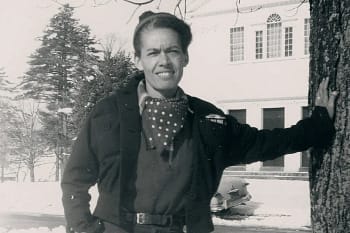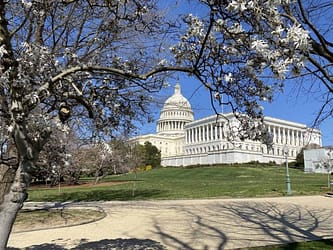Short of an immediate statewide response, residents who lost homes and livestock in the Texas wildfire are taking matters into their own hands to better prepare their property for a wildfire.
Spring rains have revived much of the green grass covering stretches of plains in the Texas Panhandle — the same land that, just three months ago, was black from fire and ash after wildfires burned more than 1 million acres across the region.
The land is slowly healing from its scars. And yet, the devastation still haunts those who call the Panhandle home.
“The lands recover faster than the people,” said Janet Guthrie a Canadian resident who raises cattle in Hemphill County.
Guthrie is one case of survivor’s guilt that echoes through the northern Panhandle as residents in the rural region continue to rebuild their lives after several fires raged in late February and early March. Her pasture burned, along with part of her yard, while many of her neighbors lost more, she said.
In total, two people were killed, as well as more than 10,000 cattle. Scores of homes, ranches and other personal property were destroyed. The losses may exceed $1 billion, a figure that includes $123 million in agricultural losses and $35 million worth of lost homes in Hemphill County.
As summer nears, the mentality among residents is largely one of self-mitigation — keeping the grass mowed, running the sprinklers, watching for overgrown weeds.
The preventive measures are in lieu of action by state government. Official measures are still in the works between lawmakers, state offices, and the companies that put their equipment in vulnerable, isolated areas of Texas.
A solution to the deadly wildfires — and the collective fear among residents — can’t come soon enough. The next legislative session begins in late January, when the Panhandle is nearing wildfire season, a time when warm temperatures, strong winds and a dry climate can turn an idle spark into a roaring fire.
A state House investigative committee determined the causes of the five fires were either unmaintained power lines coming in contact with dry, grassy land or old, neglected oilfield sites. The committee called for more monitoring of oil and gas operators and utility services, who are entrusted to maintain and inspect the miles of lines strung throughout the northern tip of the state.
State Rep. Ken King, a Canadian Republican who led the committee, said on-site operators have a responsibility to maintain those properties and are failing to do so. He said lawmakers are working with several state agencies, including the Railroad Commission and State Fire Marshal, to remedy what they can do before the legislative session next January.

“It is on the state to enforce the law,” King said. “What we can’t fix, that’s where the bills will be drafted from.”
Data shows that climate change is driving wildfires to be more intense and longer wildfire seasons in the Panhandle. Five of the largest wildfires in Texas history collectively burned nearly 2.6 million acres since 2006, according to data from Texas A&M Forest Service. This includes this year’s Smokehouse Creek fire, which grew into the largest in state history. With the region becoming more vulnerable to wildfires and the legislative session being months away, Panhandle residents find themselves doing what they can do to stave off the danger.
The morning the fires started, Guthrie’s husband turned on the sprinklers to water their lawn.
The winds were picking up. He hoped the wet ground would keep the fire at bay.
By the end of the day, their pasture and part of their yard burned, except for a corner that was hit by the sprinklers. One of the horses they couldn’t rein in chose that spot as sanctuary from the flames.
“We thought we would have lost him, the barn, the house,” Guthrie said. “By the efforts of firefighters and the grace of preventive measures, we did not.”
Guthrie concedes it doesn’t always work — homes with well-maintained lawns were completely lost.
For the Canadian River Municipal Water Authority, similar action stopped the fires from reaching the water supply for thousands in the region. Flames were creeping up on the headquarters near Lake Meredith, forcing an evacuation.
This article in this post was originally published on the Texas Tribune website and parts of it are republished here, with permission under a Creative Commons license.
See our third-party content disclaimer.

















